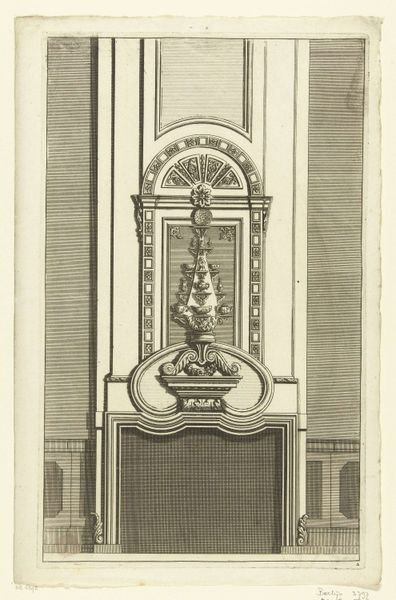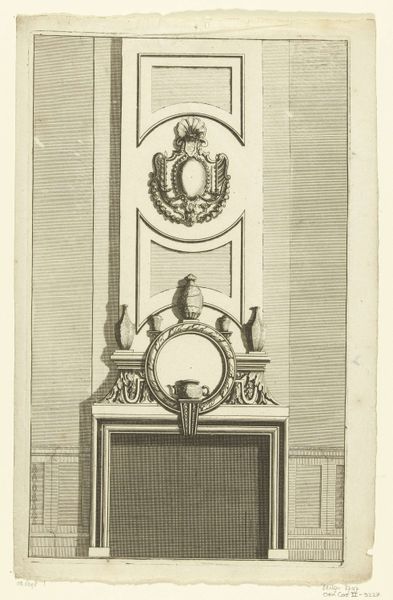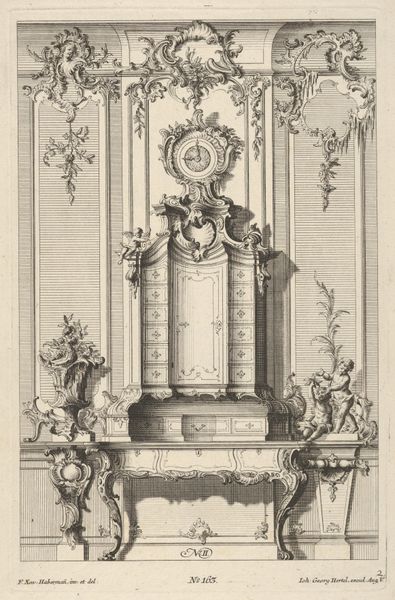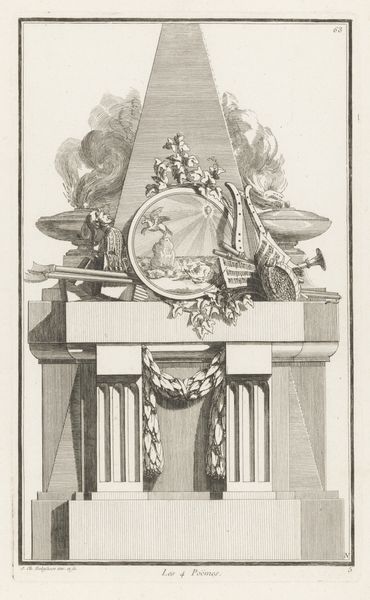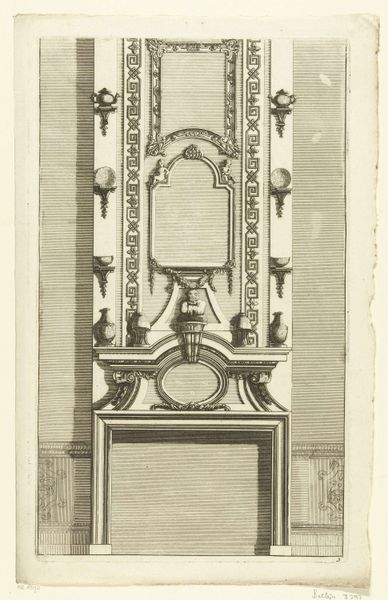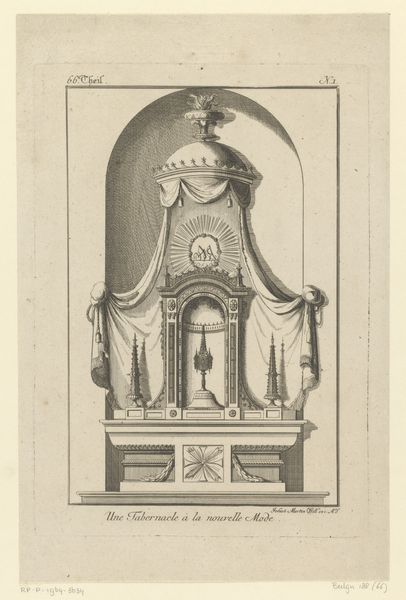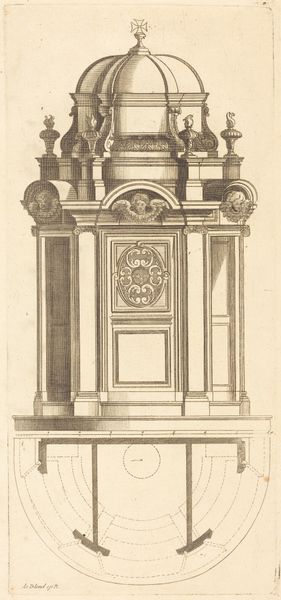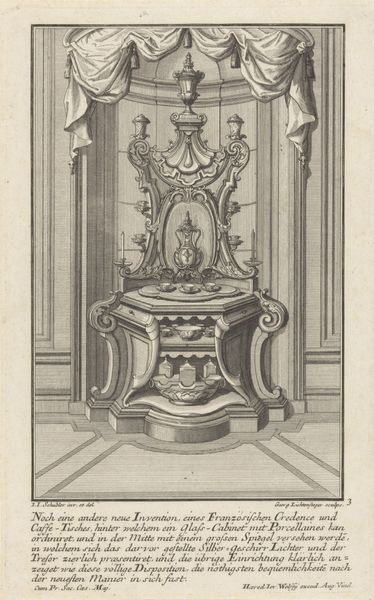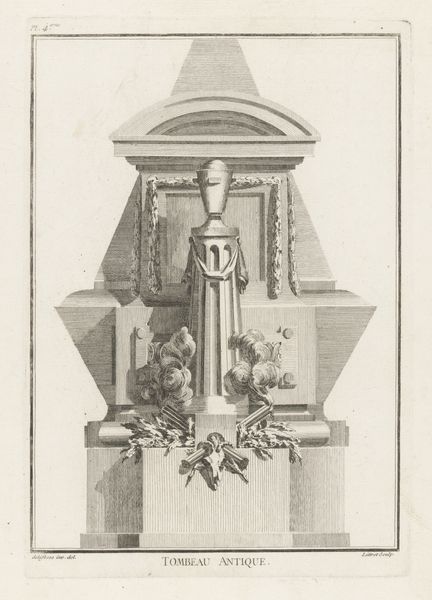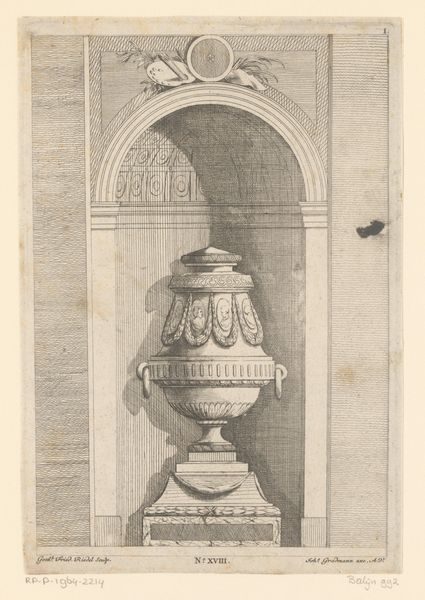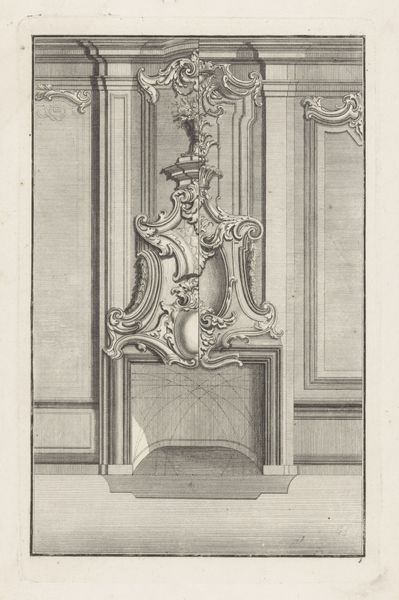
drawing, print, engraving
#
drawing
#
baroque
#
dutch-golden-age
# print
#
old engraving style
#
engraving
Dimensions: height 310 mm, width 192 mm
Copyright: Rijks Museum: Open Domain
Art Historian: Editor: Standing here in the Rijksmuseum, I’m looking at a drawing by Pieter Schenk, created sometime between 1680 and 1700. It’s called "Onderboezem met urn en vijf vazen," and it seems to be an engraving. It's quite detailed, depicting what looks like a mantelpiece. I am struck by the level of craft and its very crisp lines. How would you interpret this work, especially considering it’s an engraving? Art Historian: From a materialist perspective, this engraving opens up several avenues for exploration. Firstly, consider the function of such a print in the late 17th century. It wasn’t necessarily intended as high art, but potentially as a design template. What does the level of detail suggest about the intended use of this engraving? Editor: Perhaps it was used as a blueprint for actual artisans creating mantelpieces? The precision suggests it was meant to be followed closely. Art Historian: Exactly! Think about the labor involved, not just in the engraving itself, but also in the extraction of the materials—the wood, the stone—for a mantelpiece of this complexity. How might social status and class affect not only production but also the reception of these objects in the Baroque period? Editor: That makes me think about who had access to such ornate mantelpieces and how this print would disseminate this design among workshops. It seems to reveal details about wealth and consumption habits of that time. Art Historian: Precisely! Furthermore, the choice of engraving as a medium allows for mass production. This reveals aspects of materiality and distribution within a specific historical and cultural context. Now, can you see why we might view this as more than just a decorative image? Editor: Yes, now it feels like a historical document, telling us about craft production, social class, and consumption patterns of the Dutch Golden Age. Thanks for offering a fresh pair of eyes! Art Historian: It’s all about looking beyond the surface, and questioning the story the materials tell us. It makes us examine history from the bottom up.
Comments
No comments
Be the first to comment and join the conversation on the ultimate creative platform.
